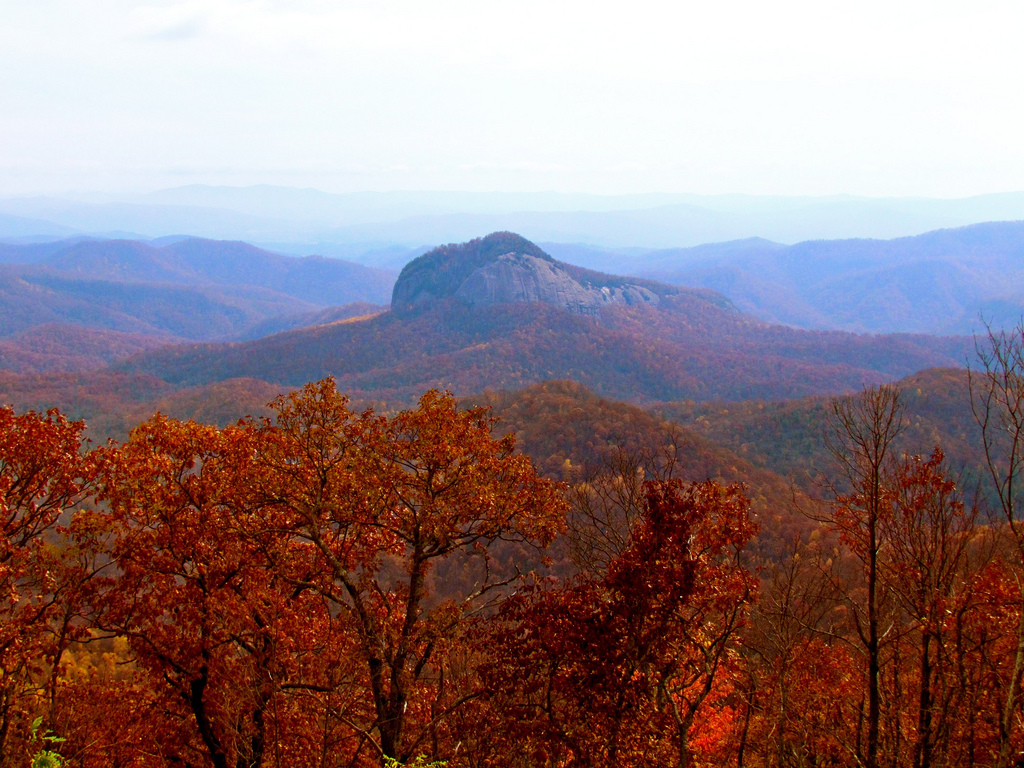Deciding the Next 15 Years for Western NC’s Forests: The Nantahala-Pisgah Forest Management Plan

This year, the National Forest Service will share the first draft of a new management plan for Western North Carolina’s two national forests, Nantahala and Pisgah.
Comprising more than a million acres combined, Nantahala and Pisgah are a central part of our natural and cultural heritage and a driver of our region’s economy. Generations of people stretching back to the first inhabitants of the Blue Ridge have depended on our beautiful mountains, forests, rivers and streams for their livelihoods. Our crafts, cuisine and culture reflect this deep connection to the land. Nantahala and Pisgah are also among the most biodiverse temperate forests on earth, with more than 2,000 species of plants, over 400 bird species (over 220 that rely on these forests for nesting,) and more than 100 species of mammals that attract attention from biology experts and enthusiasts from all over the world.


To honor this heritage and range of virtues, MountainTrue’s approach to our public lands seeks balance and sustainability. We want a forest plan that:
- Protects our wild places and unique natural habitats for future generations,
- Benefits our region’s economy,
- Includes timber harvest as a tool for restoration and habitat creation,
- And continues to offer inspiration, adventure and solitude to all of us who enjoy these mountains.
Previous management plans for Nantahala and Pisgah have come up short. The 1987 plan tilted too far toward resource extraction and put our wild places and sources of clean water and recreation at risk. The Western North Carolina Alliance (now MountainTrue) appealed that plan, eventually prompting the Forest Service to add a 1994 amendment with protections for streams and springs, and to begin restoration for old-growth forests that had been decimated at the turn of the 20th Century. But the goals of the 1994 amendment were not realized due to decreasing federal budgets, lack of political leadership for protective designations, and a lack of ecosystem specific priorities for timber harvest and restoration.
Fast forward to recent years: the early draft of the forest management plan released in 2014 would have zoned almost 70% of the forest for timber management. MountainTrue again pushed back, with thousands of our supporters asking the Forest Service for a more balanced forest plan.
Those of us who care about our forests are trying something different this time: coming to the Forest Service with a win-win vision first.
That’s why MountainTrue is an enthusiastic participant in the Nantahala Pisgah Forest Partnership, a collaborative group that has gathered in the spirit of cooperation and compromise to bring all forest interest groups into the same room at once: timber, water, wildlife, recreation, wilderness and more. We don’t leave anyone behind, and we believe it’s critical that everyone be willing to support everyone else’s values with the expectation that the support will be reciprocal. For the past five years, the Partnership has come up with a vision and a set of win-win strategies for a forest plan that allows all of our interests to co-exist and thrive.
The Forest Service has also received recommendations from other groups participating in the forest plan revision, and now we want to share the best of those ideas with you. Check out our events calendar for upcoming panels, presentations and information sessions about the forest plan.


